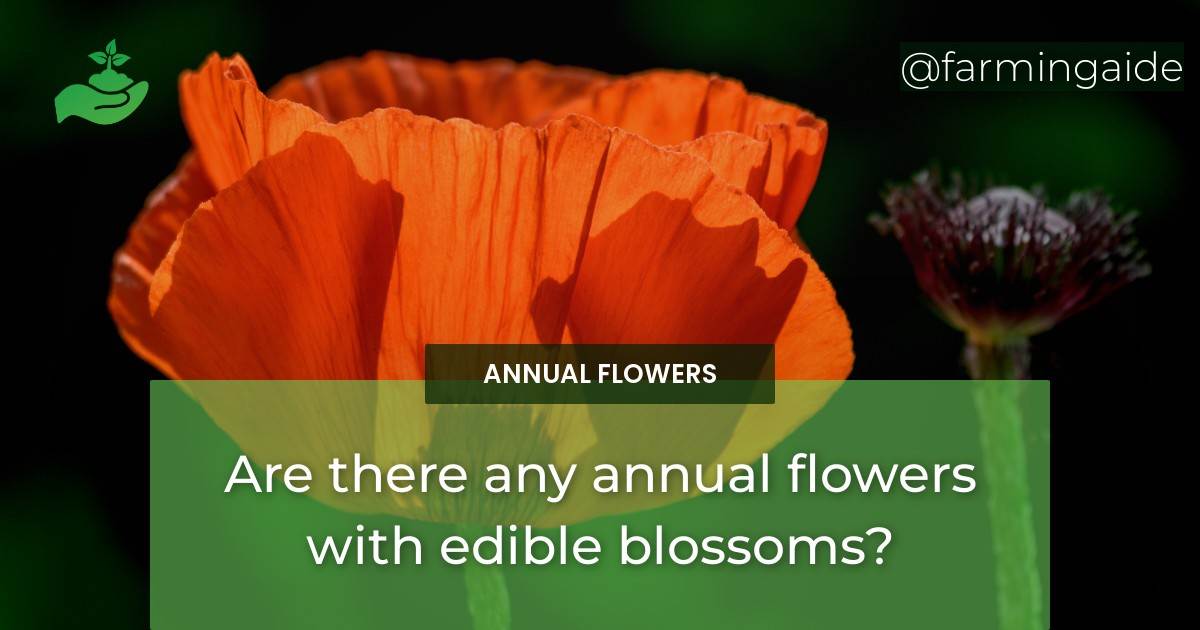Annual flowers with edible blossoms are a delightful addition to any garden, adding both beauty and flavor to dishes. While many people are aware of herbs and vegetables that can be eaten, not many know that certain flowers can also be used as ingredients in cooking. In this article, we will explore the types of annual flowers that have edible blossoms, their culinary uses, and tips for growing and harvesting them.
Table of Contents
Introduction to Edible Flowers
Definition of Edible Flowers
Edible flowers are flowers that are safe for human consumption. They are used in various culinary preparations, including salads, teas, cocktails, and desserts.
History of Edible Flowers
Edible flowers have been used in food and medicine since ancient times. They were popular in Roman, Middle Eastern, and Chinese cuisines and were often used for their medicinal properties.
Importance of Edible Flowers in Culinary Preparations
Edible flowers not only add flavor and color to dishes but also provide health benefits. Some flowers are rich in antioxidants, vitamins, and minerals, while others have anti-inflammatory and antimicrobial properties.
Types of Annual Flowers with Edible Blossoms
Nasturtiums
Nasturtiums are easy to grow and have vibrant orange, yellow, and red flowers with a peppery taste. The leaves and seeds are also edible and can be used in salads and pesto.
Calendula
Calendula or marigold has bright orange and yellow flowers with a slightly bitter taste. They are often used in soups, stews, and rice dishes and can also be used to make tea.
Pansies
Pansies have delicate, edible flowers in shades of purple, yellow, and white with a slightly sweet flavor. They are often used to garnish pastries, cakes, and salads.
Violas
Violas have small, edible flowers in shades of purple, blue, and yellow with a mild, sweet flavor. They are often used to decorate desserts and can also be used to make tea.
Marigolds
Marigolds have bright orange and yellow flowers with a slightly citrusy flavor. They are often used in Mexican and Indian cuisines and can be used to make tea.
Dianthus
Dianthus or carnations have edible petals in shades of pink, red, and white with a clove-like flavor. They are often used to flavor liqueurs and can also be used in salads.
Bachelor Buttons
Bachelor buttons or cornflowers have bright blue flowers with a slightly sweet taste. They are often used to add color to salads and can also be used to make tea.
Culinary Uses of Annual Flowers with Edible Blossoms
Adding Flavor to Salads
Edible flowers can add color and flavor to salads, making them more visually appealing and tasty. Pansies, nasturtiums, and violets are often used in salads.
Garnishing Desserts and Cocktails
Edible flowers can be used to decorate desserts and cocktails, adding a touch of elegance and sophistication. Pansies, roses, and jasmine are often used to garnish desserts.
Infusing Oils, Vinegars, and Butters
Edible flowers can be used to infuse oils, vinegars, and butters, adding a unique flavor to dishes. Lavender, thyme, and rosemary are often used to infuse oils.
Making Syrups, Jams, and Jellies
Edible flowers can be used to make syrups, jams, and jellies, adding a floral flavor to these condiments. Rose petals, elderflowers, and lavender are often used to make syrups.
Tips for Growing and Harvesting Annual Flowers with Edible Blossoms
Soil and Sun Requirements
Most annual flowers with edible blossoms require well-draining soil and full sun exposure.
Planting and Propagation Techniques
Annual flowers with edible blossoms can be grown from seeds or seedlings and require regular watering and fertilizing.
Harvesting and Storing Flowers
Edible flowers should be harvested in the morning when they are at their peak flavor and freshness. They should be stored in a cool, dry place or in the refrigerator for later use.
Conclusion
In conclusion, annual flowers with edible blossoms are not only beautiful but also delicious and nutritious. From salads to desserts, there are many ways to incorporate these flowers into your culinary preparations. With proper growing and harvesting techniques, you can enjoy these edible flowers year-round. So why not experiment with adding edible flowers to your dishes and elevate your culinary experience to the next level?


